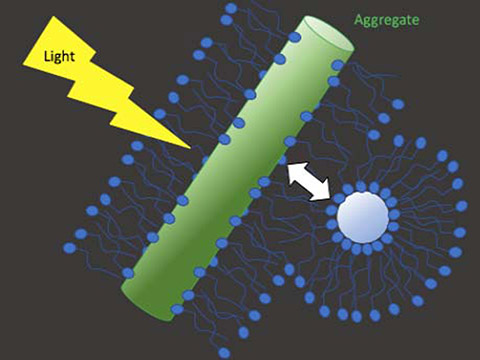Nicolás Yehya
Mentor: Professor Dorthe Eisele
Several photosynthetic organisms employ molecular aggregates to efficiently collect and transport energy in drastically varying environmental conditions. These self-assembled supramolecular aggregates accomplish this efficient and robust light harvesting via delocalized Frenkel excitons – bound electron-hole states involving multiple molecular units. Another kind of optically functional nanomaterial, metal nanoparticles, can support oscillations in conducting band electrons (localized surface plasmon resonances). Creating hybrid materials composed of excitonic and plasmonic components has the potential to produce enhanced light-harvesting properties and to open new avenues for controlling light detection and energy flow. In these hybrid nanoconjugates, parameters like spatial separation between excitonic and plasmonic components can be constrained by coating component materials in lipid-like surfactants, with the potential to produce homogeneous solution phase ensembles, enabling in-depth spectroscopic investigation.
Schematic of hybrid nanoconjugate component materials coated in lipid-like surfactants in order to produce homogeneous solution phase ensembles.
Last Updated: 04/27/2018 12:30
